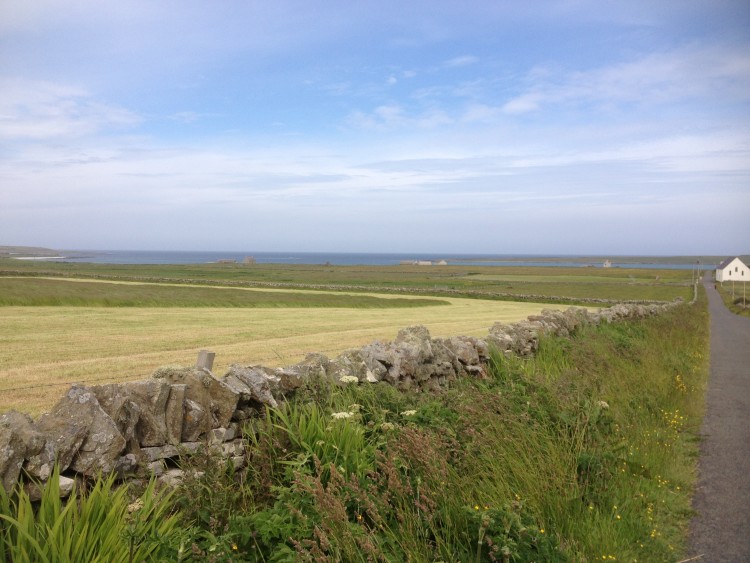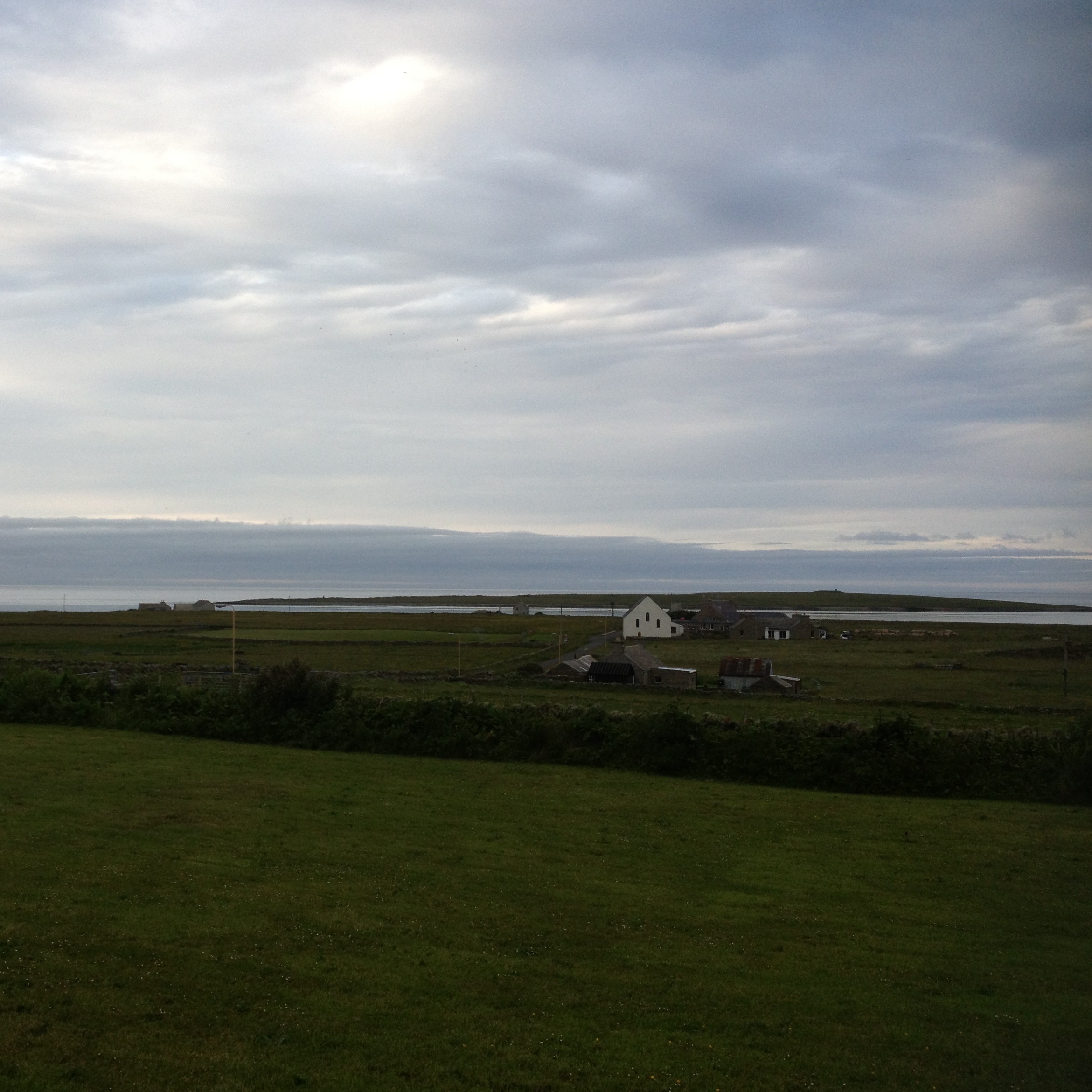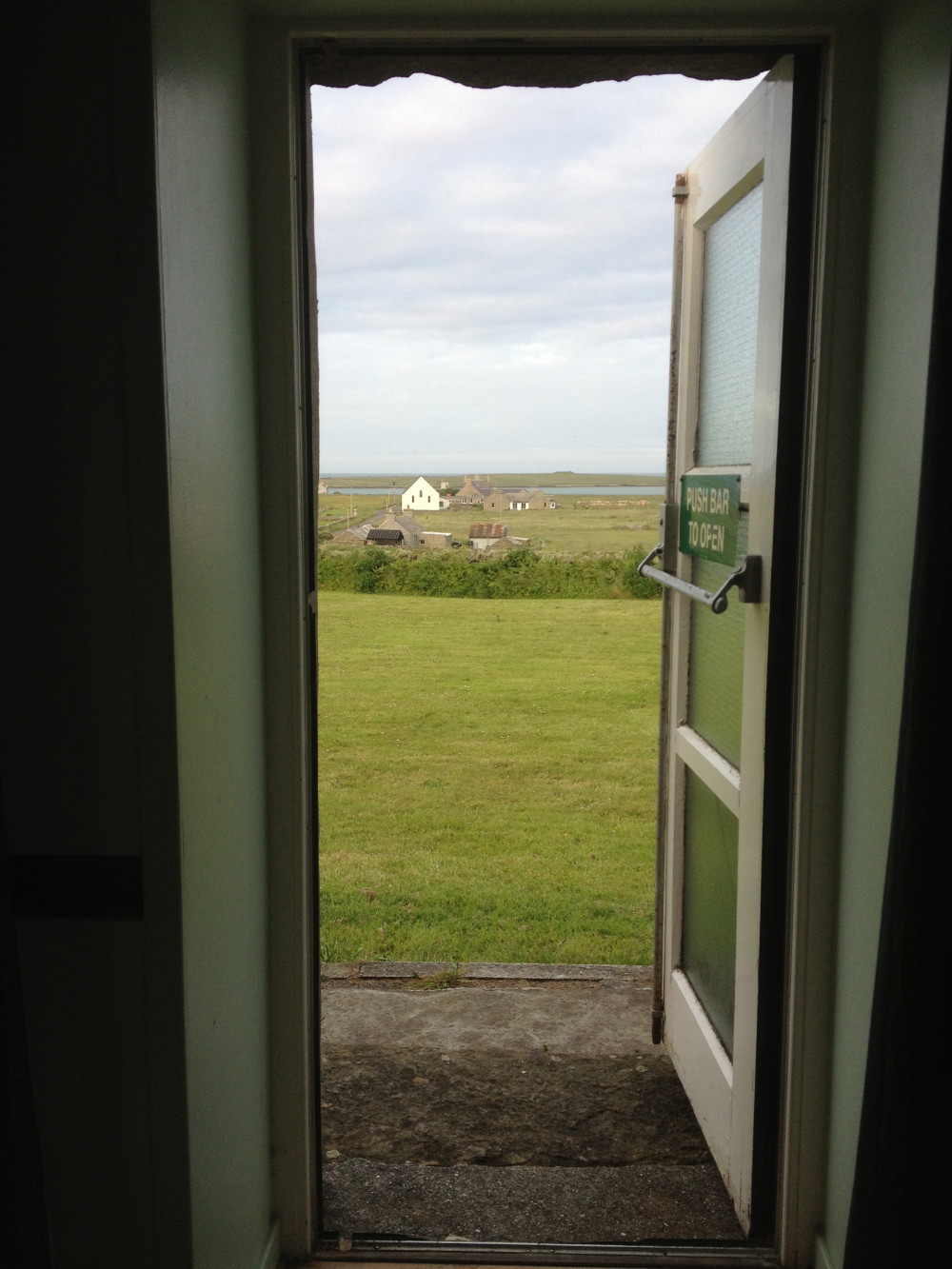Well, the convivium was held on Papay the first week of July, and what a remarkable experience it turned out to be. I’ve been to many conferences, in many different formats. This one was unique. First, it was intense and focused. Michael McGhee and I took turns to chair the sessions, and with more time devoted to questions and comments than normal at conferences, they were in-depth and wide-ranging. But the intensity wasn’t just the result of lots of sessions back-to-back – if it were it would have been a poorly designed conference, after all. It was the combination of twelve people living closely together socially and working together that produced such an astonishing feeling of critical togetherness, of opened-up spaces for discussion. Most of the participants have emailed or told Michael and I of their similar experiences. The week’s activities have been well summarised by Jane McNaughton in her medical humanities blog here, and my take on some of it is below the fold.
Here’s what the timetable looked like. We kept the agenda fairly limber, according to the way that the sessions and the weather (both physical and that of the sessions) developed. Michael and I aimed for paperless conversations that would still be challengeable and capable of development into formed and reformed positions later, and that seemed to happen almost effortlessly. At times it startled me: less so Michael, for this was his seventh convivium whereas it was my first.
In his session Roger Kneebone talked of his work on interdisciplinarity and surgery practices. He showed a video of surgical simulation, discussing amongst much else how important was the context of the embodied practices we were looking at. In a profession that glorified detachment and difference, he observed, we needed to explore the materiality of practices. In a walk later I discussed that point at length with him and Clark Cunningham. How, for instance, had an education in the materiality of practices contributed to the decision-making processes of Capt Sullenberger when he downed the Airbus in the Hudson, (mentioned in this blog here and here), saving the lives of his passengers? Roger drew comparisons between the practices of a bespoke tailor and a surgeon —
See particularly 6.06 ff where Roger and Joshua discuss learning processes, the place of habit and practice, and the ethics of practice. In this encounter there is so much to learn about the nature of professionalism, its practice complexity and grounded theory, for any professional. It raises many questions for legal educators about how law can be learned in a practice context, and how the context of learning deeply affects that learning. Such contexts were explored by almost every participant in one way or another. Beverley Clack, on spontaneity as a context in education (adducing Arendt on totalitarianism) for instance, or Harriet Harris on the narrowness of graduate attributes, and the hijacking of the phrase ‘student experience’ to mean not a sophisticated set of relations between students, institutions and staff but its reduction to a customer relationship.
This was just one conversation among many. Throughout, the island of Papay was a constant presence, with farmers working on silage by day –

– and, in such high latitudes, into the long evenings (this photo below was taken at 2140, with over two hours of daylight left):

I’ve spoken before on this blog about how the social and physical backdrop to a conference can affect tone and mood. What would happen when a group of academics met on a small island, scarce three miles by one mile? The uniqueness of the environment was bound to have an effect on the convivium participants – it served to draw us together, to make us continuously conscious of each other much more than I have been aware of participants at most other conferences I have attended. The sense of community was palpable, but not mere shallow convergence of ideas. There was a genuinely participatory culture for that brief period. We talked about our papers, tested them with each other, in a much wider and more fruitful context, exploring them beyond the bounds of the academic sessions.
All of us walked to the sessions, which were held at the Guest House (or Beltane, photo looking out from it) from where we stayed; we walked over the island; we visited the Holm of Papay, an uninhabited islet to the east of Papay. We descended a ladder into the dark interior of a Neolithic chambered tomb. Brendan Larvor, Nigel Duncan and I were looking for some of the markings, shining our torch at an angle to the stonework to put them in relief. Brendan put it into context: what, he said, if future archaeologists were to find an incised cross on the ruined stones of a cathedral – how could they possibly infer the whole extraordinary superstructure of Christian belief and theology from that figure? Were we doing the same in the tomb with the markings? It was a powerful moment. In retrospect it referred to the whole convivium, too. And to Higher Education, seen in the long perspective of culture and time. What would we leave behind that was recognisable in five or fifty let alone five thousand years?
The final social event was a ceilidh organised by the Papay Community Association, with local musicians playing for the dances including yours truly joining them on the mandolin and Brendan on mandolin and guitar. Tony Gash spoke there of The Tempest, likening the convivium to the play. The analogy was irresistible. Like Shakespeare’s play, transformation was a theme of the conference, a sea-change of sorts. But it was about loss and recovery as well. Our themes of Higher Education and Professionalism could so easily have become a mourning for what university education has become, but it became much more creative and dynamic than that. Jane, at the blog posting above, gives an indication of what we discussed, but we’ll be developing that in much more detail in the e-book of the convivium that we will be putting together in the near future. More of that as it emerges.
Meanwhile, I must give thanks to the organisations and the people who made it all possible. To the Higher Education Academy, whose National Teaching Fellowship grant of £10,000 was spent entirely on the convivium – on participant travel, accommodation, subsistence, and much else. To the convivium participants, for giving a week of their time to an experiment in intellectual community-building. To the Papay Community Association for organising the Friday ceilidh — truly memorable. Grateful thanks, too, to our Convivium Organisers on Papay, Candy King, Travel & Accommodation Officer, and Inga Hourston, Morag, Mharie and Rosemary, the convivium Catering Officers, for planning, costing, cooking and serving the wonderful food – without doubt the best conference catering I’ve ever had. Many thanks to the people of Papay for their kindnesses, and for making us all so welcome – and particularly to Douglas Hourston for ferrying us across to the Holm, and to Jocelyn Rendall for her tours of the Neolithic Knap of Howar and the eighth century foundation of St Boniface and of the many centuries of history at the farm of Holland, all of which resonated with the discussions we had on learning, culture, the material culture of education and much else.



Comments
3 responses to “Papay Convivium”
Honesty box: the remark about future archeologists was borrowed from a French tour guide, talking about cave-paintings.
… and now that you mention it, I do recall you saying that at the time, Brendan. There are two examples of incised crosses from Papay — see http://www.paparproject.org.uk/orkney2.html.
A fantastic blog that captures something of why this worked. It’s utterly changed my views about how to conduct academic debate and really made me think about what it means to live and work together. Thanks again!